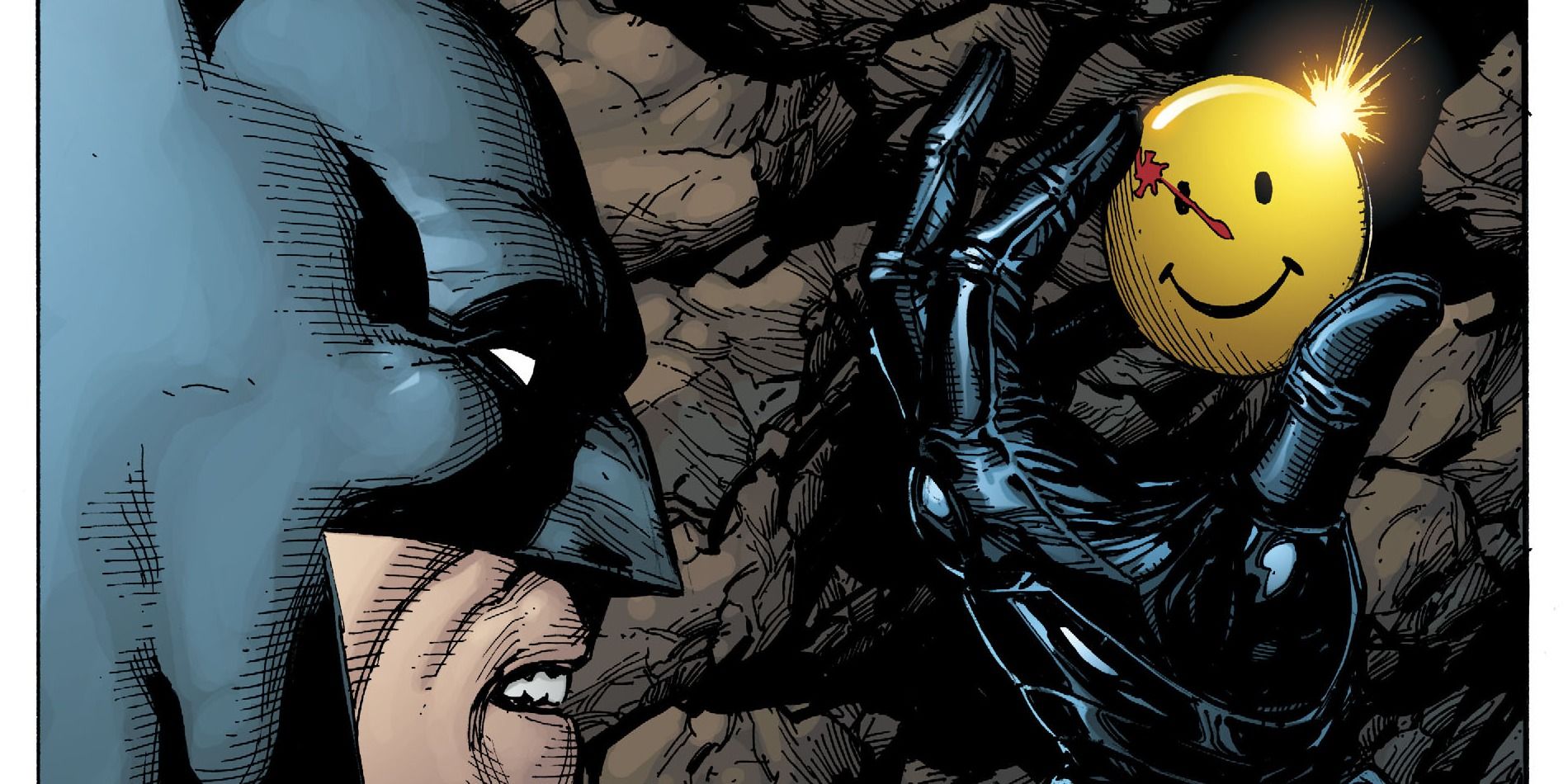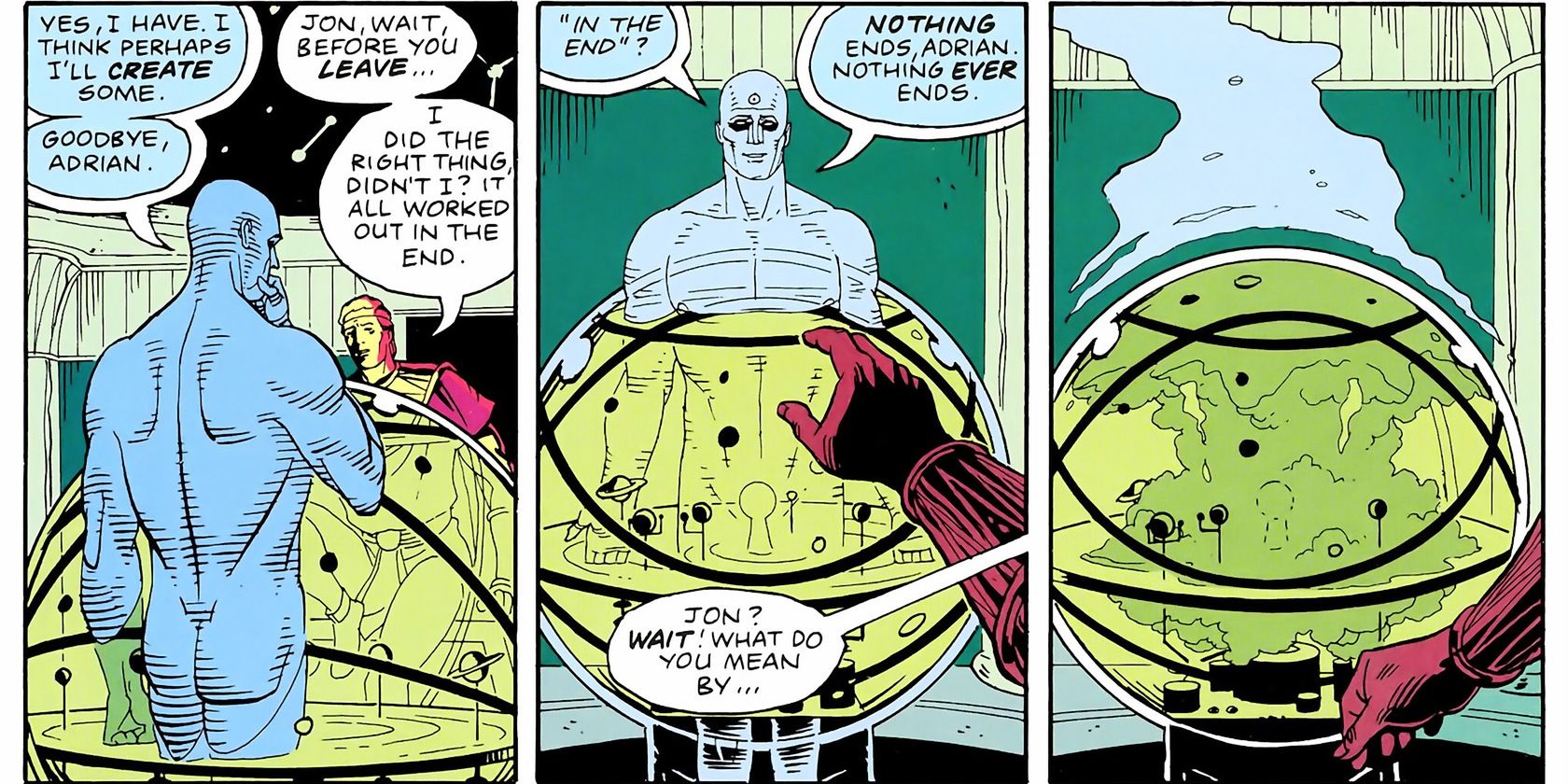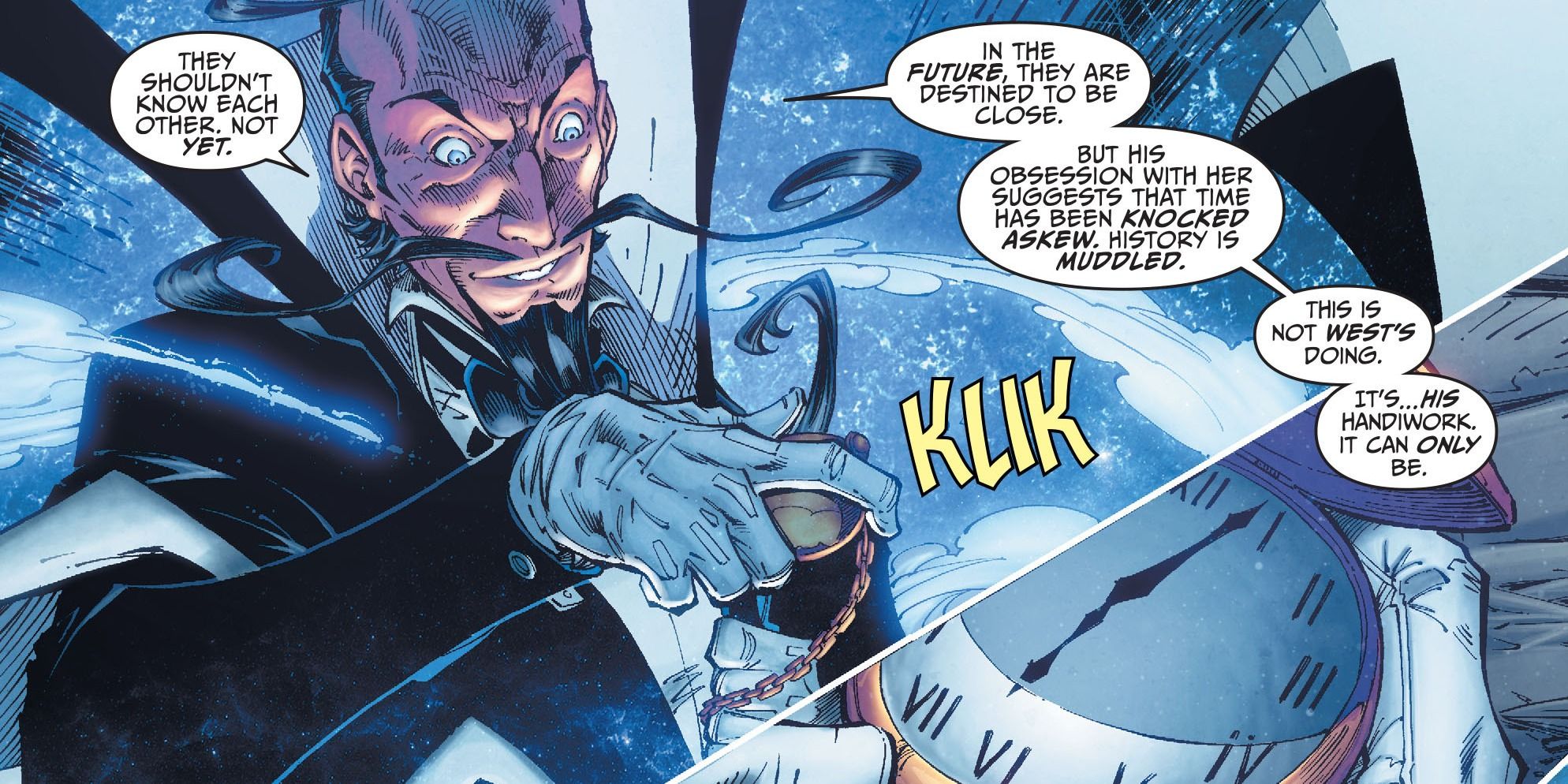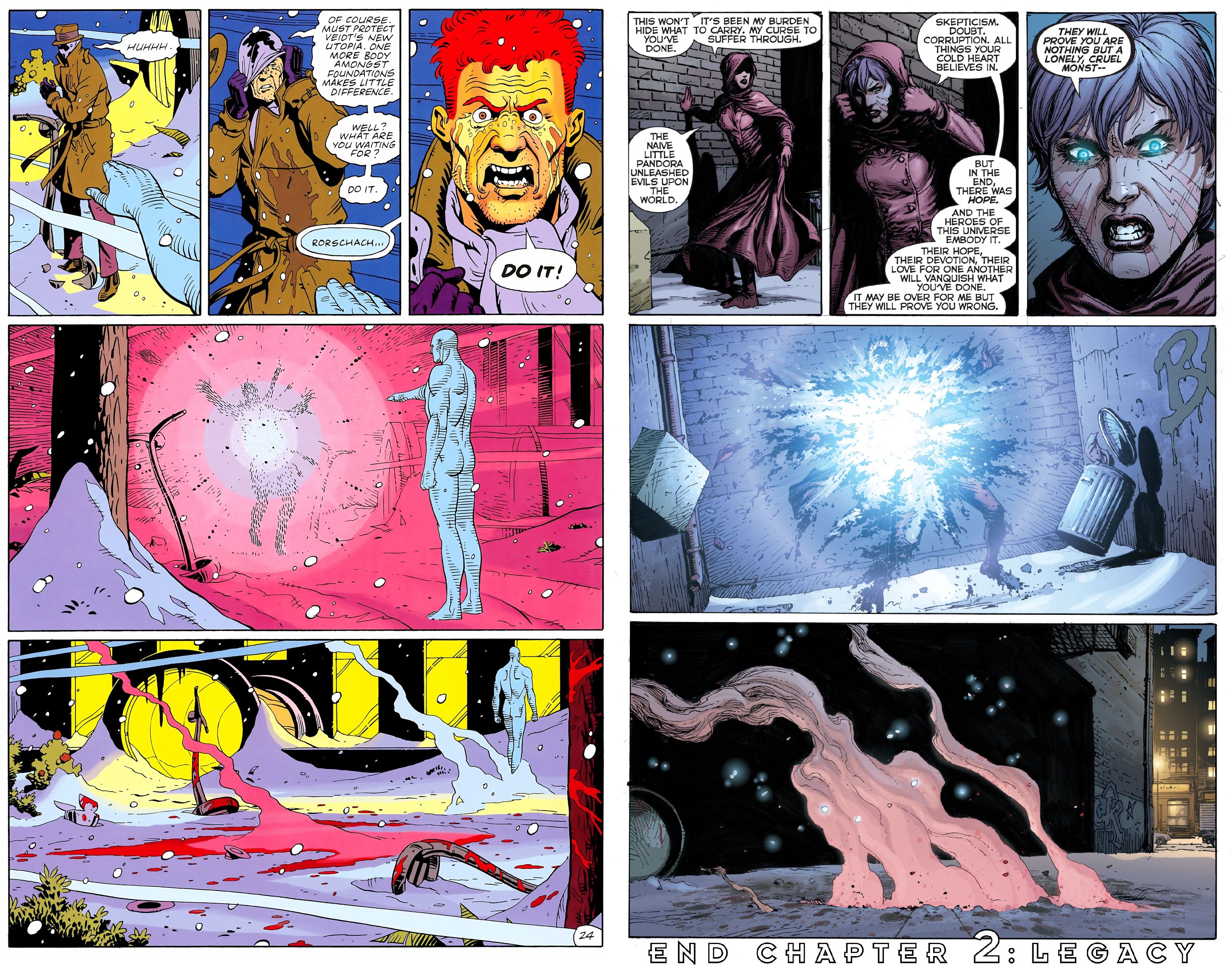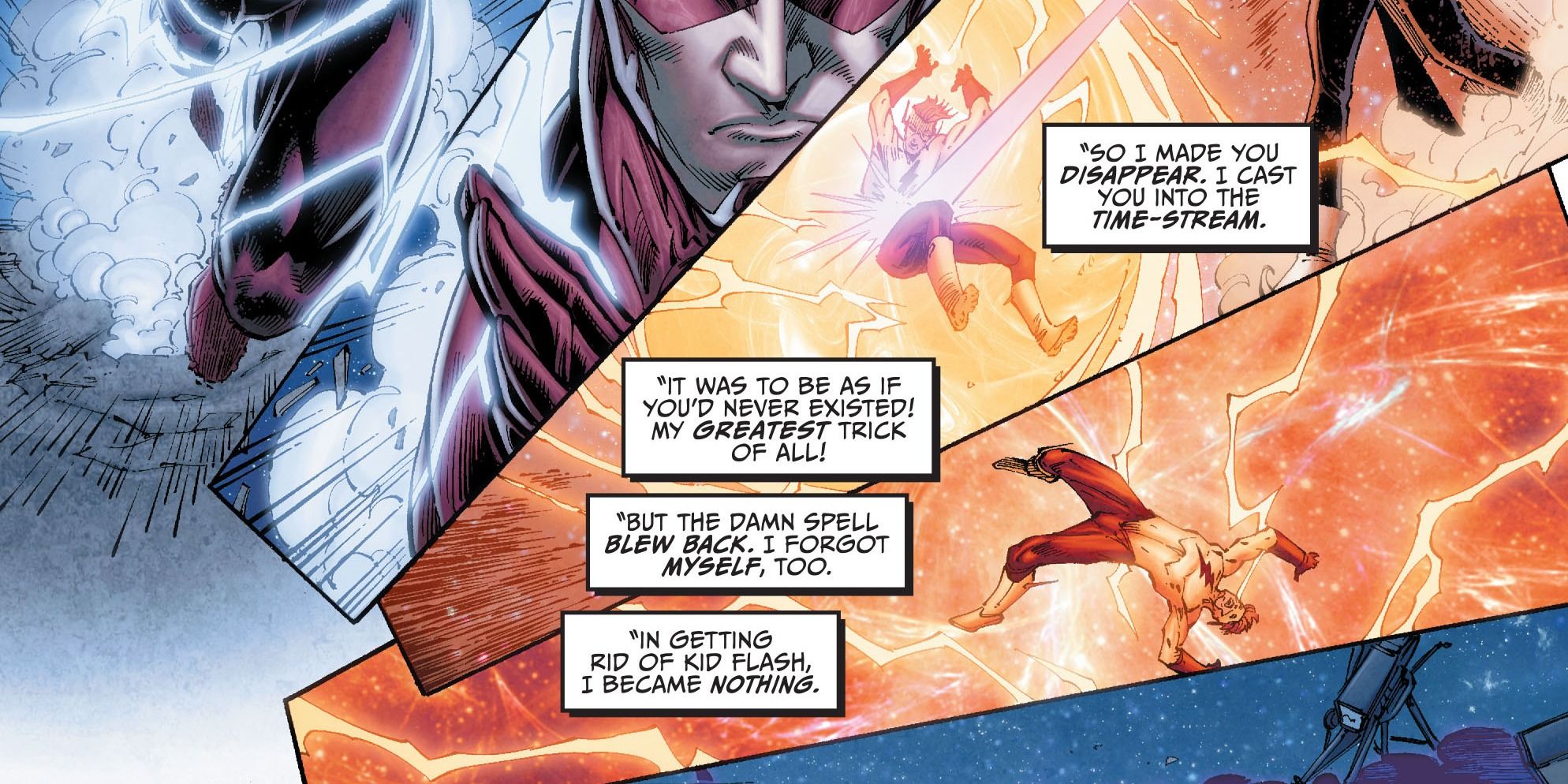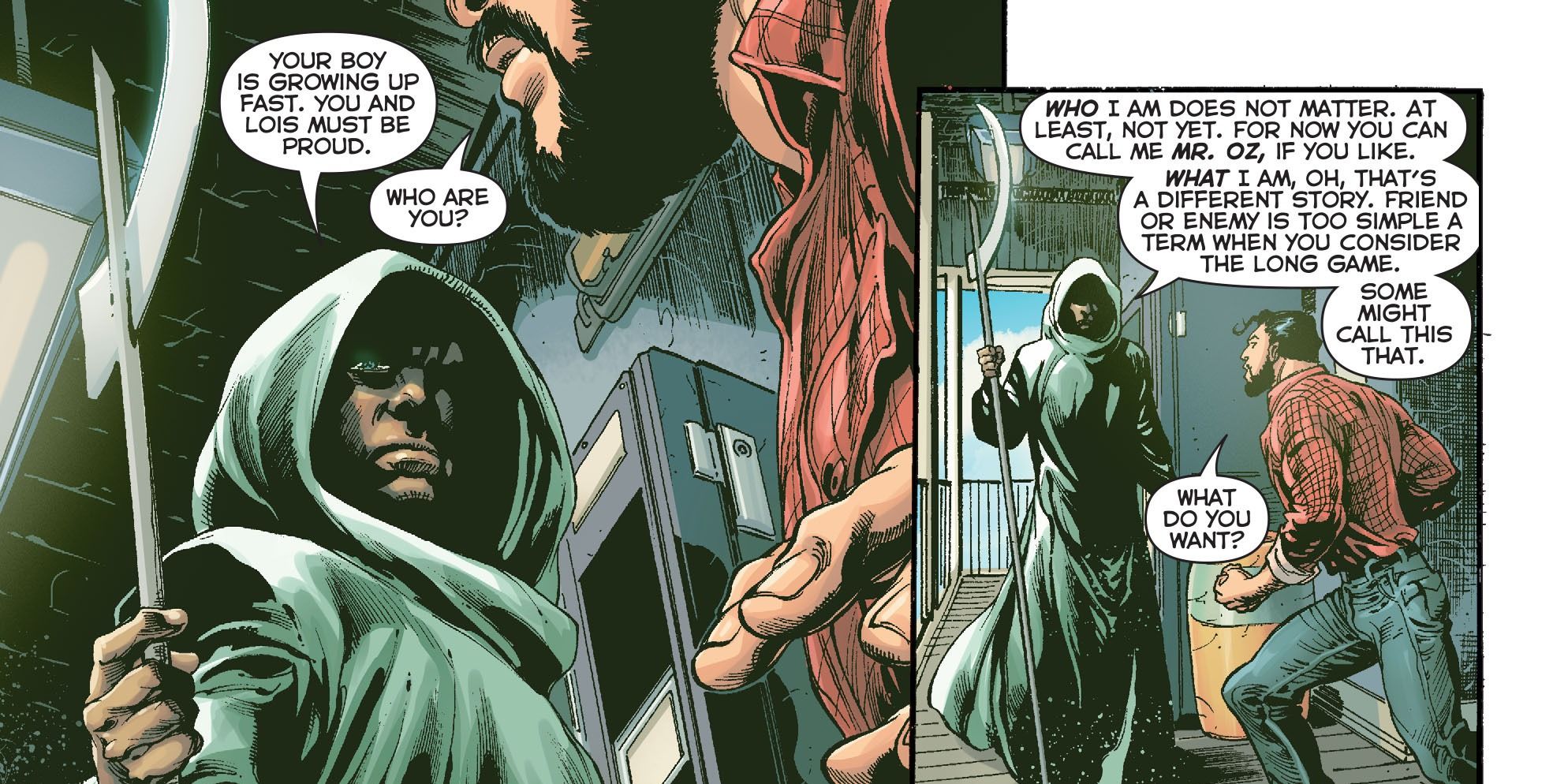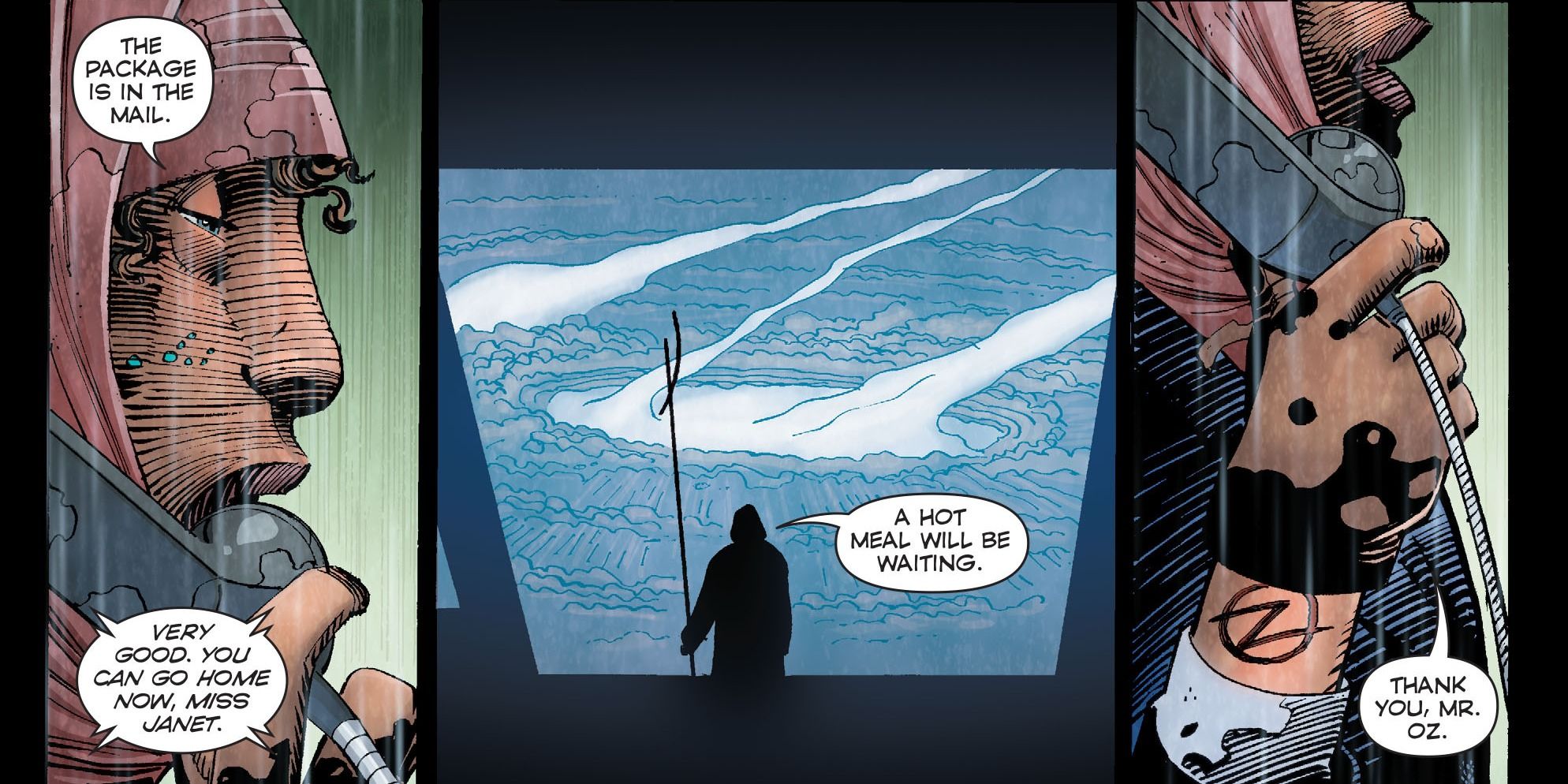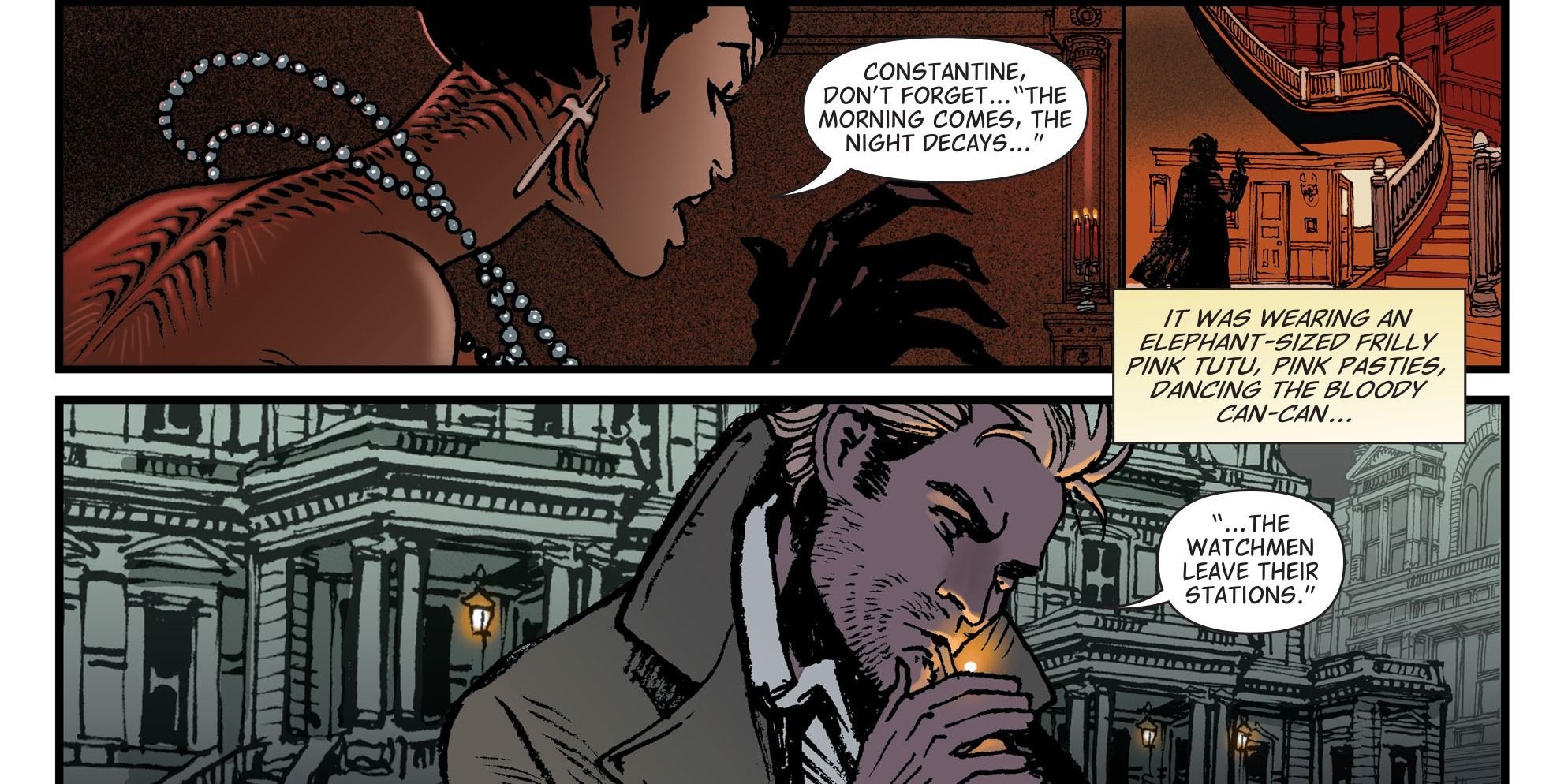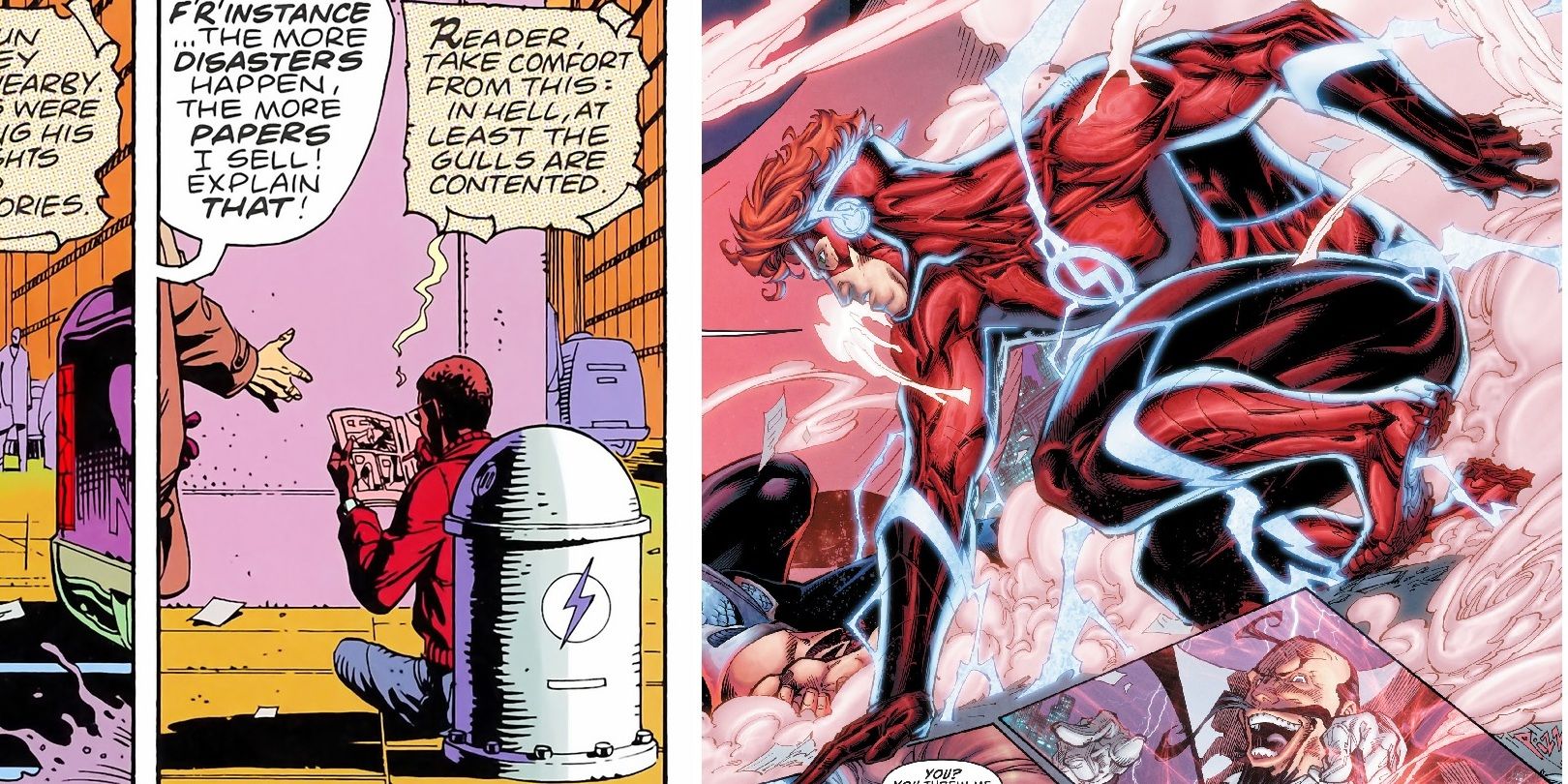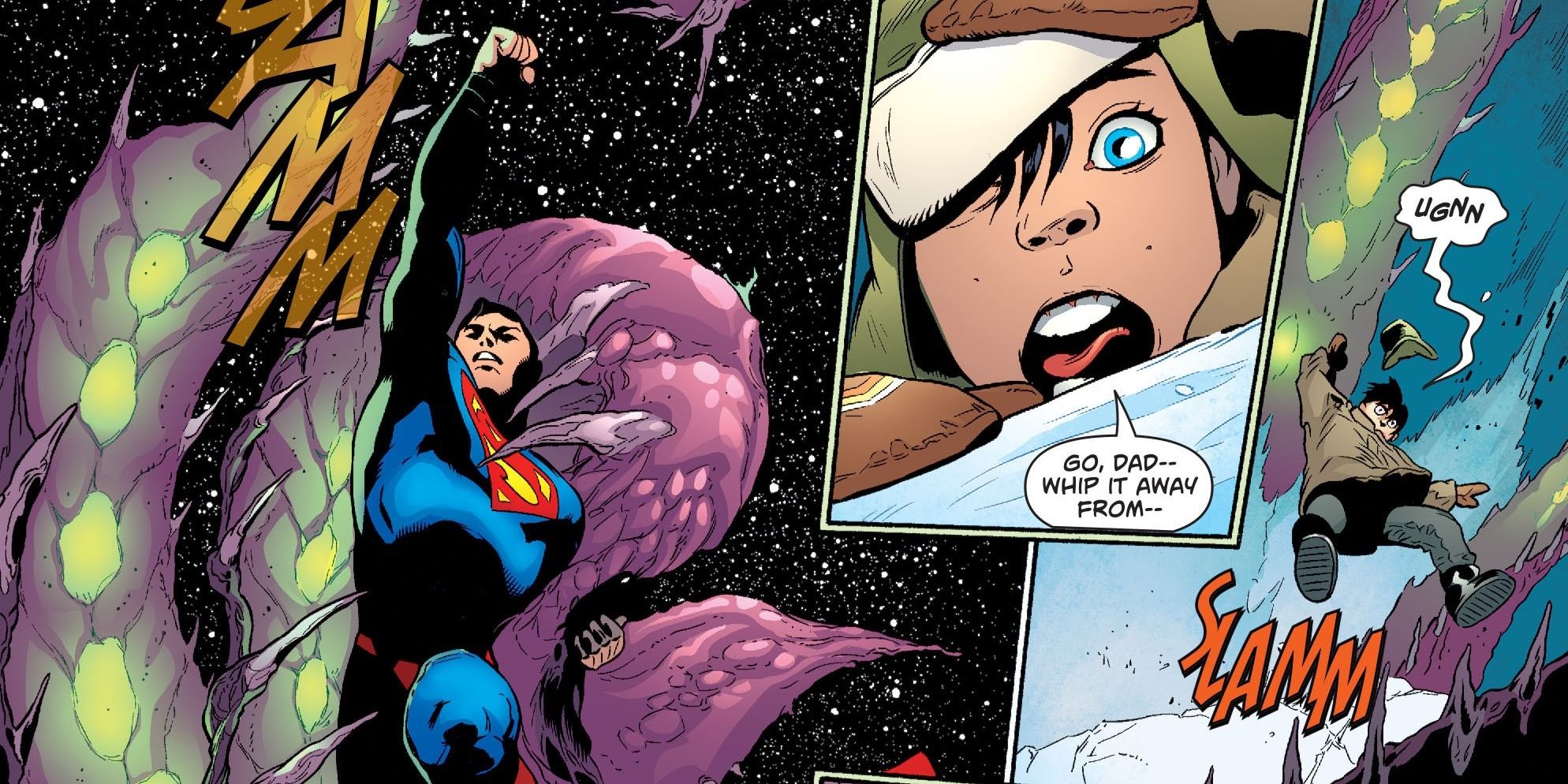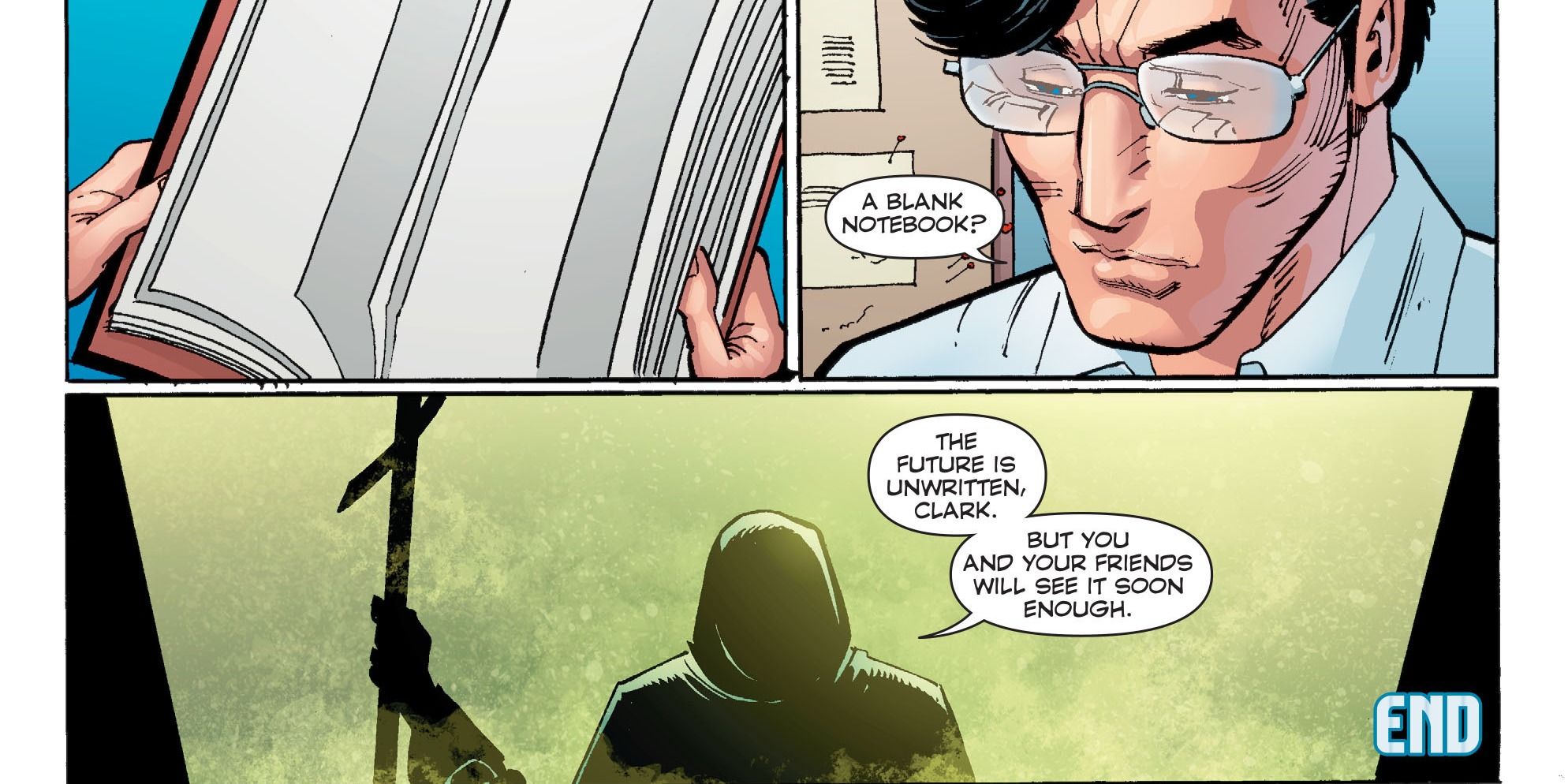WARNING: This post contains spoilers for various DC Comics Rebirth titles.
The final issue of "Watchmen" may have debuted nearly 30 years ago, but as Doctor Manhattan observed so famously, "nothing ever ends." Indeed, Doctor M himself looks to be making a comeback as part of DC Comics' Rebirth initiative.
RELATED: "Batman"/"Flash" Crossover Set to Explore DC's "Watchmen"/Rebirth Mystery
It started with May's "DC Universe: Rebirth" special and continues to roll out in bits and pieces as part of the publisher's superhero line. Because Co-Publisher Dan DiDio and President and Chief Creative Officer Geoff Johns have each teased more "Watchmen" involvement in 2017, we're taking stock of where the landmark miniseries' characters might already have appeared, and what it all could mean going forward.
Down Time
Of course, mixing "Watchmen" characters with the main-line DC super-folk is a bit like Garth Brooks adding tortellini to all his recipes: It sounds preposterous, it shouldn't really work, and you don't want to try it because either you'll get sick or you'll hate yourself for liking it. Indeed, both "Watchmen's" in-story and real-world timing suggested very strongly that it wasn't to be considered part of the DC superhero cosmos.
Nevertheless, here we are; so let's see where the end of "Watchmen" left its players. On the most basic level, "Watchmen" -- written by Alan Moore, drawn by Dave Gibbons and colored by John Higgins -- is the story of Adrian "Ozymandias" Veidt's plot to save the world from nuclear holocaust in 1985 by teleporting a giant telepathic squid-bomb into the middle of New York City. Because that involves killing an awful lot of people, it produces a giant conspiracy, an attendant cover-up, and a lot of death along the way.
RELATED: Geoff Johns Hints He'll Write "Watchmen"-Focused Comic
Among the dead is The Comedian, aka Eddie Blake, who's been a masked vigilante (and, later, government-sponsored assassin) since the late 1930s. Blake knew too much, so Veidt killed him. The vigilante who investigated Blake's murder, Walter "Rorschach" Kovacs, also ended up knowing too much and wanting to die because of it. At the end of "Watchmen" he asked Doctor Manhattan to kill him, and the latter obliged.
Veidt's plan succeeded despite the efforts of two other vigilantes, Nite Owl (Dan Dreiberg) and Silk Spectre (Laurie Juspeczyk). Both are still around at the end of "Watchmen," having assumed the new identities of Sam and Sandra Hollis. Although they're apparently on the run from the law (thanks to breaking Rorschach out of jail in Issue 7), both are also apparently interested in continuing their costumed careers, with Silk Spectre hinting at a more Comedian-like approach.
Finally, there's Doctor Manhattan, once a scientist named Jon Osterman, whose omnipotence was held in check only by his indifference, and ultimately his logic. He leaves Earth at the end of "Watchmen," thereby depriving the planet of the single greatest influence on its late 20th-century development. (Speaking of planets, he also leaves behind a smashed crystalline castle on Mars.) We've speculated previously that while Doctor M talks about creating some new lifeforms, perhaps the "Watchmen" universe itself is Earth-Q, created artificially by the Superman of Grant Morrison and Frank Quitely's "All Star Superman."
As for the Earth itself, the final pages of "Watchmen" indicate that Veidt's plan worked. The Cold War is over, the Soviet Union and the United States are working together in the wake of the apparent extraterrestrial attack, and Robert Redford may even run for president in 1988. The one thing that might upset the optimistic mood is Rorschach's journal, delivered to a right-wing newspaper just before his death.
Watchmaker, Wizard and Watcher
Accordingly, if the Rebirthed comics pick up after the events of "Watchmen," four of its main cast are still "at large": Doctor Manhattan, Ozymandias, Nite Owl and Silk Spectre. The "DCU: Rebirth" special, written by Geoff Johns and drawn by various artists, also connected to "Watchmen" through a couple of artifacts, Wally West's watch (repaired telekinetically on Mars) and the Comedian's blood-stained button.
In 2011, in the main DC Universe, the "Flashpoint" event ended with the Barry Allen Flash -- guided by the mysterious immortal Pandora -- reordering the timeline to facilitate the New 52 reboot/relaunch. The New 52 eliminated Barry's successor Wally West, but the "DC Universe: Rebirth" special brought him back, with the awareness that a new and powerful force had taken away 10 years' worth of history. The Rebirth process also switched out the late New 52 Superman for his pre-"Flashpoint" predecessor.
A number of "Rebirth" events seem to indicate Doctor Manhattan's work within the DC Universe. Perhaps the most obvious is Pandora's murder, portrayed in the "Rebirth" one-shot as a fairly close parallel to Rorschach's death. Johns and penciler Gary Frank's combined efforts made that explicit, with Pandora's anger and atomization matching Rorschach's. In hindsight, we can also suppose that whoever killed Pandora had previously dispatched Owlman and Metron (who were fighting over the Mobius Chair at the end of "Justice League" vol. 2 #50), because they died in much the same way.
Doctor Manhattan also appears to be behind Wally's allegations about the timestream, although "Watchmen" itself never depicted him changing the past. Indeed, Doctor Manhattan regarded time as immutable, asking in Issue 4, "Who makes the world? Perhaps the world is not made. Perhaps nothing is made. Perhaps it simply is, has been, will always be there ... a clock without a craftsman." At the end of Issue 9, Manhattan tells Laurie he values life -- "rarer than a quark and unpredictable beyond the dreams of Heisenberg" -- but that's not necessarily an opening to mess around with time itself. Just before his departure in Issue 12 he tells Ozymandias "[h]uman affairs cannot be my concern," which suggests he would need at least a compelling reason to do anything so drastic.
For that matter, "Watchmen" doesn't say whether Doctor Manhattan can even affect the timestream. He may have a unique perspective on time, but he travels through it at the same rate everyone else does. Granted, it's not something we would have seen, because his philosophy probably wouldn't have allowed him to try and change the past. After all, someone who experiences past and present as he does would probably go insane if any of it were altered.
RELATED: DiDio & Lee Say DC Will Take the Time to Do "Watchmen"/Rebirth Story "Right"
Additionally, Doctor Manhattan does have trouble seeing the future when faster-than-light tachyon particles are involved. As part of his plan, Ozymandias generated tachyons artificially to confuse Manhattan so he wouldn't be able to stop the squid-creature. Literally in the midst of the destruction, Doctor M finds this appealing: "I'd almost forgotten the excitement of not knowing, the delights of uncertainty ..."
Therefore, when Doctor M leaves Earth he doesn't know where he'll end up, maybe because there are a lot of exotic tachyon-style particles. Naturally this reminds us of the Speed Force, where everything goes faster than light, and where he could have encountered the lost Wally West. However, Doctor M's "uncertainty" about his future could also be merely an act, and he knows what he'll be doing but wants to pretend it's all a surprise.
Speaking of the future, though, the first arc of the Rebirthed "Titans" involved the classic Flash foe Abra Kadabra. A magician from the 64th century, the applause-craving Abra used advanced technology to perform "magical" feats. At the end of 1999-2000's "Dark Flash" storyline by Mark Waid, Brian Augustyn and Paul Pelletier ("Flash" vol. 2 issues 156-58, January-March 2000), Abra kidnapped Wally's wife Linda Park with the aim of erasing her from history; and in the recInt "Titans" arc he hatched a similar scheme. This time, however, Abra claimed to have removed Wally from history (and, as revealed in Issue 5, himself too).
In "Titans" #3, Kadabra also talked about wanting to avoid a "soulless, clockwork future." That could either be a reference to Doctor Manhattan conquering Earth for all time, or a more "Watchmen"-esque way of talking about the 64th century's various monotonies and repressions. Wally had visited Abra's future in August-September 1992's "Flash" #67-68, and found it to be oppressive for everyone, not just for Abra. Omen confirmed this when she tapped into Abra's mind in "Titans" #6, describing his future not just as "clockwork," but as "cold and joyless. Like a laboratory experiment."
Abra also expressed a more personal vision of the future in "Titans" #4: "I know that one day, Wally West will stop me for good. He will finally beat me so comprehensively, I will be destroyed. That's unacceptable. But the lovely thing about the future is it's so bendy. I've come back to change it ... and stop Wally West before he stops me." Thus, a blood-splattered pocket watch in "Titans" #3 may keep readers in a "Watchmen"-minded mood, but Abra sees himself acting alone. To be sure, Abra is aware of someone else with the power to alter time. In Issue 3, he notes that "time has been knocked askew. History is muddled. This is not West's doing. It's ... his handiwork. It can only be." Put together with Lilith's finding the word "Manhattan" in Abra's memories, and it points directly to "Watchmen."
Still, it may not point to Doctor Manhattan himself. So far, readers have yet to see "Watchmen's" only superhuman in the blue flesh. Instead, they've been getting a lot of Mr. Oz, a character who first appeared in Issue 32 (August 2014) of the New 52 "Superman" series. Created by Geoff Johns and John Romita Jr., Mr. Oz spent a lot of time observing both the New 52 and pre-"Flashpoint" Supermen, and indicated that he helped train the New 52 version when the latter was younger. Following the New 52 Superman's death, Mr. Oz then tells the pre-"Flashpoint" Man of Steel that "you and your family are not what you believe you are[,] and neither was the fallen Superman." Mr. Oz also talks to unseen guests, who may be the prisoners he's collected for some as-yet-unknown purpose. We know these prisoners include a pre-"Flashpoint" version of Doomsday and Red Robin (Tim Drake), teleported away from (respectively) the Phantom Zone in October 2016's "Action Comics" #962 and from certain death in November 2016's "Detective Comics" #940.
Mr. Oz wears a green hooded robe, carries a crescent-topped staff, and employs an assistant named Janet whose tattoo looks a bit like the logo for the Veidt company's perfume Nostalgia. (She delivers to the New 52 Clark Kent a blank S-shield notebook -- shades of Rorschach's journal? -- and Mr. Oz observes "The future is unwritten, Clark. But you and your friends will see it soon enough.") His bank of monitors is further reminiscent of the dozens of TV screens in Ozymandias' Antarctic home. While these details tend to suggest "Watchmen's" Ozymandias collectively, they're not conclusive and could simply be coincidental.
In fact, "Oz" arguably makes just as much sense as a nickname for "Osterman." Doctor Manhattan was susceptible to emotional outbursts but (for lack of a better term) prided himself on his restraint; and as discussed above doesn't seem like the kind of being to interfere in the timeline on a whim. By contrast, Adrian Veidt didn't get overly emotional and dealt heavily in large-scale manipulation, using whatever methods were available to him. We would not be surprised if Veidt found a way to duplicate the accident which led to Doctor Manhattan -- he did take Doctor M apart in "Watchmen" #12, albeit temporarily -- and gave himself time- and space-spanning powers. Alternatively, if somehow that made Doctor Manhattan human again, the identity of "Mr. Oz" wouldn't be much of a stretch. (Of course, "Dr. Oz" would be too confusing.) We're still at a loss about the robe and staff, though.
Worth a Second Glance
Janet's "Nostalgia" tattoo is just one of several elements in DC's superhero line that remind us, intentionally or otherwise, of "Watchmen." In "The Hellblazer" #2, John Constantine finishes a quote: "The morning comes, the night decays, the watchmen leave their stations." It's from William Blake's "America: A Prophecy," spoken by a libertine character during the Apocalypse. Blake also wrote "Tyger, Tyger," quoted in "Watchmen" #5. The "Hellblazer" quote (courtesy of writer Simon Oliver and artist Moritat) is probably just a gentle jab at "Rebirth"; but we feel compelled to note it regardless.
The same goes for Tweedledum and Tweedledee quoting their signature nursery rhyme in "Batman" vol. 3 #9: "Just then flew down a monstrous crow, as black as a tar barrel; which frightened both the heroes so they quite forgot their quarrel." Naturally, in the context of "Watchmen," the quote recalls Ozymandias' hope that an external threat would force the U.S. and the U.S.S.R. to be "so frightened" that they'd "forget their quarrel."
Also in recent issues of "Batman" is the Psycho-Pirate, famously one of the few characters to remember the infinite Multiverse which existed prior to "Crisis on Infinite Earths." It doesn't connect him directly to "Watchmen" -- which, remember, is decidedly post-"Crisis" -- but if anyone knows anything about the Multiverse, he would.
Of course, Blue Beetle (Ted Kord) and Captain Atom are themselves the inspirations, however distant, for Nite Owl and Doctor Manhattan. (Others included Nightshade/Silk Spectre, Peter Cannon/Ozymandias, and Peacemaker/Comedian.) That connects them to "Watchmen" on a metatextual level, and each has returned to DC's superhero lineup after an extended absence, although so far neither has been involved in the current cosmic mystery. As it happens, during "Forever Evil" a few years ago DC seemed to have big things in store for The Question, who of course was Rorschach's inspiration. The Question was also part of the Trinity of Sin alongside the Phantom Stranger and the late Pandora, which may make Pandora's Rorschach-mirroring death just a little more noteworthy.
Perhaps one of the biggest coincidences is the similarity between two unrelated symbols. Both the electric-car recharge stations in "Watchmen" and the Wally West Flash share a stylized lightning-bolt symbol that is more streamlined than the other Flash emblems. Wally's symbol came to the comics from a slight redesign done for the "Superman" animated series (and seen later in "Justice League"); and the electric-car recharge is such a minor detail that it has to be a coincidence. Nevertheless, an enterprising writer could probably make it into a bit more.
The name "Wally West" is also superficially similar to "Wally Weaver," the Jimmy Olsen-like character who was Doctor Manhattan's buddy in the early days. Weaver was diagnosed years later with cancer, allegedly (and falsely) attributed to his association with Doctor Manhattan. It's a stretch as well, but if Doctor M became lost in the Speed Force and heard the name "Wally," it probably would have caught his attention.
As for the Comedian's button, Nite Owl had it cleaned up by the end of Issue 1. (He's got it on the last page during his and Laurie's after-dinner chat.) Therefore, it must come from some other place along the "Watchmen" timeline -- which doesn't have to be the beginning of the miniseries, because it also got blood-splattered when Blake received his scar in Vietnam. The point is that it seems mostly symbolic of the new connection between the two universes, and not a major plot element. It will, however, be the subject of an April crossover, as described below.
Finally, we expect Wally West to get his uncle's watch back (and in good working order) sometime before "Rebirth's" resolution plays out. That does seem like it could be a plot point.
Minute Details
Certain other elements of current series may have further resonance with the "Watchmen" portions of "Rebirth." For example, the villain of "Justice League Vs. Suicide Squad" is Maxwell Lord, who completed his turn to the dark side by killing Blue Beetle. Like Ozymandias, Max started out as a wealthy do-gooder who eventually orchestrated a vast conspiracy and (in 2005's "Countdown to Infinite Crisis" special, co-written by Geoff Johns) murdered one of his old associates who had discovered it. That plot didn't originate with "Watchmen," but these days the similarities are hard to ignore.
Superman's Rebirth experiences also include some "Watchmen"-esque elements. He fights giant tentacled monsters in both the "Justice League: Rebirth" special and in "Superman" #2; and in "Superman" #1 and "Superman Annual" #1, he leaves glowing-blue handprints in the ground. Admittedly, not every tentacled monster comes from Adrian Veidt. However, the "Annual" seemed to explain that these handprints -- one of which turned Swamp Thing temporarily into a glowing-blue, Kryptonese-speaking creature -- were a byproduct of Superman not being attuned correctly to this Earth's natural frequencies. Swamp Thing seems to have helped "re-tune" Superman, so the handprints might not reappear. Still, until further notice it seems that anything blue which glows needs a bit more scrutiny.
Finally, Ray "Atom" Palmer's visit to the Microverse (discussed both in the "DC Universe: Rebirth" and "Justice League of America: Atom Rebirth" specials) could be connected to Mr. Oz's prison, but all we know so far is that he's there and its gatekeeper can't be trusted.
The Clock is Ticking
The expanding intersection between the world of "Watchmen" and the DC Universe has given readers a lot to examine. While there are a number of direct connections, there are probably even more red herrings and blind alleys. (No doubt some of those blind alleys will have "Who Watches..." graffiti.) We haven't even brought up the "Three Jokers" subplot, mentioned in May's "Justice League" #50 and the "DC Universe: Rebirth" special and then pushed onto a back burner, because it doesn't seem to have much "Watchmen" relevance. Granted, Doctor Manhattan could duplicate himself without any apparent limit, but that doesn't make him the Joker.
As the "Watchmen" characters don't have home-field advantage, this will probably play out according to standard superhero-serial tropes; and that most likely means a Big Event miniseries in the not-too-distant future. Until then, expect more teases, surprises, and perhaps even a cameo or two. Mr. Oz will be in the spotlight fairly soon, specifically when one of his prisoners escapes as part of March's "Superman Reborn" event; and in April Batman and the Flash will tackle the mystery behind "the button." If it's not resolved until May 2018, that's a lot of anticipation and buildup. With everything the two universes have to reconcile, here's hoping all of "Watchmen" and "Rebirth's" gears end up meshing together smoothly. We'll be watching for more hints, and we'll keep you posted as they come in.
Which "Watchmen" elements have you seen in DC's superhero comics? Let us know in the comments!

